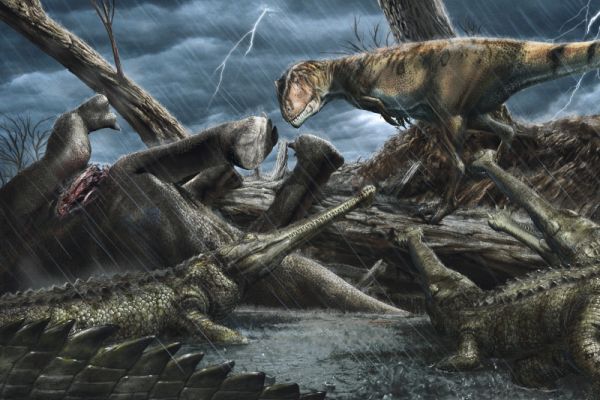Around 100 million years ago, the Sahara was teeming with ferocious predators on land, through the skies, and in its waterways.

The findings come from a review of the fossil vertebrates found in Cretaceous rock formations (the Kem Kem Group) in south-eastern Morocco. The authors explain that this is the largest most inclusive review on the subject performed on the topic in the last century and provides a unique view into the dinosaur species that roamed Africa.
Toothy times
“This was arguably the most dangerous place in the history of planet Earth, a place where a human time-traveller would not last very long,” says lead author Dr. Nizar Ibrahim, an Assistant Professor of Biology at the University of Detroit Mercy and Visiting Researcher from the University of Portsmouth.
The Sahara wasn’t always a wind-swept desert. Around 100 million years ago, before the dinosaurs discovered meteorites, the area was actually pretty lush. The team explains that a vast river system irrigated the land, and a great variety of land and aquatic species made a home here.
Fossils recovered from the Kem Kem Group (which consists of two distinct formations, the Gara Sbaa Formation and the Douira Formation) include three of the largest species of predatory dinosaurs ever found, the team explains, such as the saber-toothed Carcharodontosaurus (which grew to over 8m in length and sported serrated teeth up to eight inches long), Deltadromeus (a raptor species that grew to around 8m in length), several species of carnivorous, flying pterosaurs, and crocodile-like stalkers.
According to co-author David Martill, a professor at the University of Portsmouth, the area’s bountiful populations of huge fish helped feed the wealth of predators.
“This place was filled with absolutely enormous fish, including giant coelacanths and lungfish. The coelacanth, for example, is probably four or even five times large than today’s coelacanth. There is an enormous freshwater saw shark called Onchopristis with the most fearsome of rostral teeth, they are like barbed daggers, but beautifully shiny.”
The paper “Geology and paleontology of the Upper Cretaceous Kem Kem Group of eastern Morocco” has been published in the journal ZooKeys.






